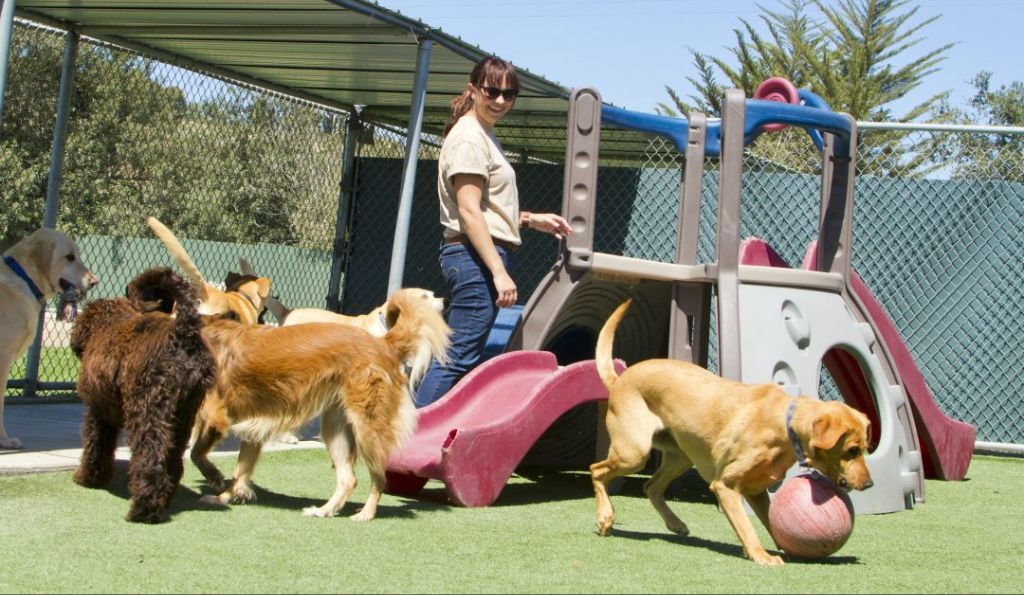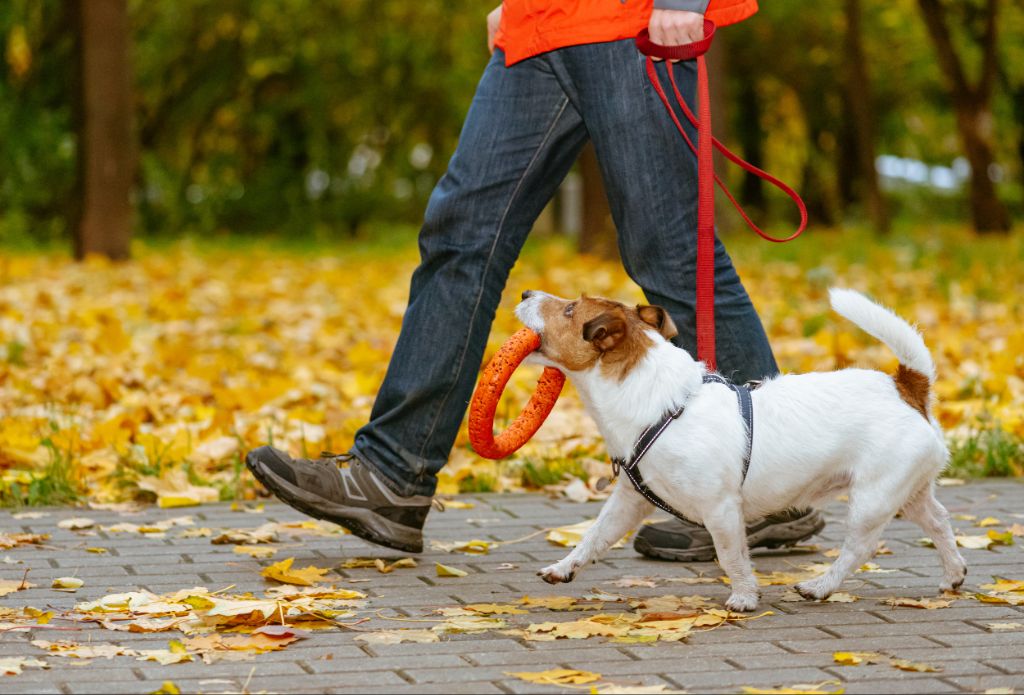Introduction
Dogs are social animals and have evolved to live cooperatively in packs. A 2019 survey showed that 67% of U.S. households own a pet, with dogs being the most popular. Many of those families have a challenging work-life balance – juggling their careers with providing quality care for their furry companions. Dogs left alone for long periods can develop behavioral problems or separation anxiety. But with some planning and effort, dog owners can find safe and enriching solutions for their pets while they work.
Understanding Your Dog’s Needs
Dogs have physical, mental, and emotional needs that must be met even when their owner is away at work. According to Rover, dogs need sufficient physical activity and exercise every day. Providing your dog with at least one long walk and several opportunities for playtime will allow them to expend their energy and stay in shape.
Mentally, dogs need stimulation and engagement when alone during work hours. Leaving interactive puzzle toys containing treats for your dog can provide cognitive enrichment. Rotating different puzzles keeps their mind active. Dogs also benefit emotionally from your love and affection. Be sure to spend quality time together before and after work.
Leaving Your Dog Alone
Most adult dogs can be left home alone for 6-8 hours while their owners are at work, according to experts. This timeframe can vary based on your dog’s age, health, and temperament. Puppies under 6 months and senior dogs may only be able to handle shorter periods of 3-4 hours alone initially. High-energy breeds like Border Collies also benefit from more stimulation and interaction during the day.
When leaving your dog alone all day, it’s important to set them up for success. Take them out for a long walk or play session beforehand to get their energy out. Make sure they can access fresh water, and provide interactive toys or chews to keep them occupied. Also be sure to puppy-proof your home and restrict access if needed to prevent destructive behaviors from developing out of boredom or anxiety.
If your workday is longer than 8 hours, consider hiring a dog walker, sending your dog to daycare part-time, or recruiting a friend or neighbor to check in. Leaving a dog alone for 10+ hours on a regular basis can lead to behavioral and health issues over time. Setting up a webcam or home monitoring system can provide peace of mind.
With the proper preparation and enrichment, most adult dogs can adapt to being left alone during normal working hours. However, they still require plenty of quality time with their owners before and after work. Keep an eye out for signs of separation anxiety like excessive barking or destruction. If these occur, you may need to adjust your dog’s routine and increase their stimulation.

According to experts at K-9 Super Heroes Dog Whispering, “How long can I leave my dog alone while at work? It’s recommended not to leave a dog alone for more than 6-8 hours. Consider hiring a dog walker or using doggy daycare if your workday is longer.” (https://k-9superheroesdogwhispering.com/dog-health/)
Hiring a Dog Walker
Hiring a professional dog walker is a great option for owners who work long hours and can’t come home during the day to take their dog out. There are many benefits to hiring a dog walker, as well as some things to consider.
Pros of hiring a dog walker:
- Your dog gets much-needed exercise and mental stimulation during the day.
- A walker can take your dog out multiple times per day, such as for bathroom breaks and a longer midday walk.
- Walks provide socialization with other dogs and people.
- Your home and belongings stay safer since your dog isn’t as bored or destructive.
- You don’t have to arrange for a family member or friend to help out.
Cons of hiring a dog walker:
- It’s an added expense, usually ranging from $15-25 per 30 minute walk.
- You have to be comfortable giving a stranger access to your home.
- Your dog is spending less time with you and bonding with someone else instead.
To find a good dog walking service, get recommendations from other pet owners. Make sure the company does background checks on walkers. Also consider walkers’ experience, any pet first aid/CPR training, and how many dogs they walk at once. Meet with potential walkers first to make sure your dog is comfortable with them.
Doggy Daycare
Doggy daycare has become an increasingly popular option for pet owners who work long hours and can’t always be home to care for their dogs. At daycare, dogs get to play and socialize with other dogs throughout the day under supervision. Some key things to know about doggy daycare include:
There are a variety of daycare options, from full day to half day to hourly drop-in visits. According to Puparazzi Pet Care, prices can range from $50 for a full day, $35 for a half day, $12 per hour for drop-ins, and $15-8 for 15-30 minute walks.

The cost for daycare will depend on your location, the amenities offered, group size, etc. On average most daycares fall in the range of $15-30 per day. There are often packages or monthly membership discounts available as well.
Pros of daycare include socialization, exercise, and avoiding boredom or anxiety when home alone. Cons can be the cost, exposure to illness from other dogs, and the need to transport to/from the facility.
When researching daycares, look for licensed facilities with solid training and temperament testing. Monitoring webcams and small group play can also be beneficial features.
Creating a Comfortable Space
When leaving your dog home alone while you’re at work, it’s important to create a comfortable space for them. This area should make your dog feel relaxed, safe, and entertained while you’re gone.
Designate a room like the kitchen, bathroom, or laundry room as your dog’s space. Make sure to dog-proof it by removing anything dangerous or valuable they could get into. Consider gating off the area so they don’t have access to the rest of the house.
Place your dog’s crate or bed in the room, along with some familiar toys. Make sure food and water bowls are easily accessible. Consider setting up a camera to check on your pet remotely.
Try leaving the TV or radio on at a low volume for background noise. Some dogs find classical music soothing. You can also leave recently worn clothing with your scent to provide comfort.
Be sure to take your dog for a good walk before confining them to help tire them out. Provide plenty of potty breaks right before you leave. The space should feel relaxing yet stimulating enough to occupy your dog while you’re working.
Sources:
https://www.cadetpet.com/dog-basics/steps-for-leaving-your-dog-at-home-while-at-work
https://www.hippo.com/blog/leaving-dog-home-alone-while-at-work
Providing Mental Stimulation
Mental stimulation is extremely important for dogs left home alone. Without mental stimulation, dogs can become restless, anxious, bored, and even destructive. Providing puzzles, toys, and activities for your dog while you’re gone keeps their mind engaged and prevents problematic behaviors.
There are many types of puzzle toys and interactive feeders that provide mental enrichment by making your dog “work” for their food. These toys hide your dog’s kibble inside compartments, under lids, or within puzzles your dog must manipulate to earn treats. Popular puzzle toys include the Kong, the Tug-a-Jug, snuffle mats, and food dispensing balls 1.
In addition to food puzzles, there are toys that encourage play and problem solving skills. Treat-releasing toys encourage foraging behaviors. Hide-and-seek toys stimulate your dog’s nose and reward them for hunting down hidden goodies. Interactive toys that can be stuffed with treats or kibble are another great option to keep your dog’s mind active.

Rotating different types of toys helps prevent boredom. Providing new and novel experiences also stimulates your dog mentally. Change up their toys frequently and get creative with DIY enrichment ideas like cardboard box “forts,” food scavenger hunts, and homemade sensory bins.
Remote Monitoring
Pet cameras allow you to check in on your dog remotely using your smartphone or computer. This can provide peace of mind while you’re away at work. Some popular pet camera options include:
The Wyze Cam v3 is an affordable HD pet camera that records video when motion is detected. It has two-way audio so you can talk to your dog through the app (https://www.reddit.com/r/puppy101/comments/r1f1r0/).
The Vimtag 1080P Pet Cam has 360 degree pan and tilt capabilities so you can view your entire room. It also has night vision and two way audio (https://www.reddit.com/r/dogs/comments/112alog/).
Specialized pet cameras like the Furbo dog camera dispense treats, allowing you to interact with your dog. It also has bark alerts and a 160 degree wide-angle view (https://www.reddit.com/r/CatAdvice/comments/14keha4/).
With remote monitoring, you can check if your dog seems anxious or is getting into mischief while you’re away at work.
Preventing Separation Anxiety
Separation anxiety is a common issue for dogs who struggle being left alone. According to the ASPCA, signs of separation anxiety include destructive behavior, house soiling, and excessive vocalization when left alone.
There are several things you can do to help prevent and ease separation anxiety in your dog:
– Establish a routine: Stick to a regular schedule for feeding, walking, playing, and leaving/returning home. This helps create predictability for your dog (Source: https://uk.frontline.com/pet-advice/easing-separation-anxiety-in-dogs)
– Provide plenty of exercise: Make sure your dog gets at least 30-60 minutes of vigorous exercise like walking, running, or playing fetch before you leave. This helps dissipate pent-up energy. (Source: https://moderndogmagazine.com/articles/how-ease-separation-anxiety-dogs/21954)

– Use calming aids: Consider using calming aids like ThunderShirts, pheromone diffusers, or calming treats. These can help relax anxious dogs. (Source: https://shallowfordvet.com/tips-to-comfort-pets-with-separation-anxiety/)
– Crate train gradually: If crate training, start slowly and make it a safe, positive place. Never use the crate to punish the dog.
– Ignore excited greetings: Don’t acknowledge your dog for 10-15 minutes before leaving and after returning. This prevents reinforcing anxiety.
– Consider doggy daycare: Doggy daycares can be a great option to socialize your dog and prevent isolation.
With proper training, exercise, and making your dog feel safe, separation anxiety can be significantly reduced. Consult with your veterinarian or animal behaviorist for additional advice. Consistency and patience are key.
Conclusion
Owning a dog while working full-time can be challenging, but is certainly manageable with proper planning and care. The keys are providing your dog adequate physical and mental exercise, setting up a comfortable and safe space for them, and easing any separation anxiety. Consider hiring a dog walker, sending your dog to daycare, or recruiting a friend or family member to check in. With a few adjustments to your daily routine and dog’s environment, you can keep your pup happy and healthy while you’re away at work.
Some final tips for working dog owners:
– Start getting your dog used to alone time early on to prevent separation anxiety. Use positive reinforcement training.
– Provide interactive toys like puzzle feeders or stuffed Kongs to keep your dog stimulated. Rotate different toys to prevent boredom.
– Set up a comfortable crate or gated area with water, chew toys, and pee pads. Make it feel like their safe den.
– Use pet cameras or ask a friend or neighbor to check in while you’re gone. This provides reassurance.
– Maintain a consistent daily routine for feeding, walking, playing before/after work. Dogs thrive on schedules.
– Get plenty of exercise and playtime together when you are home to make up for the daytime absence.
– If all else fails, consider doggy daycare a few days a week or hiring a dog walker. This gives social time and activity.
With preparation and planning, you can absolutely be a responsible dog owner while working full time!
